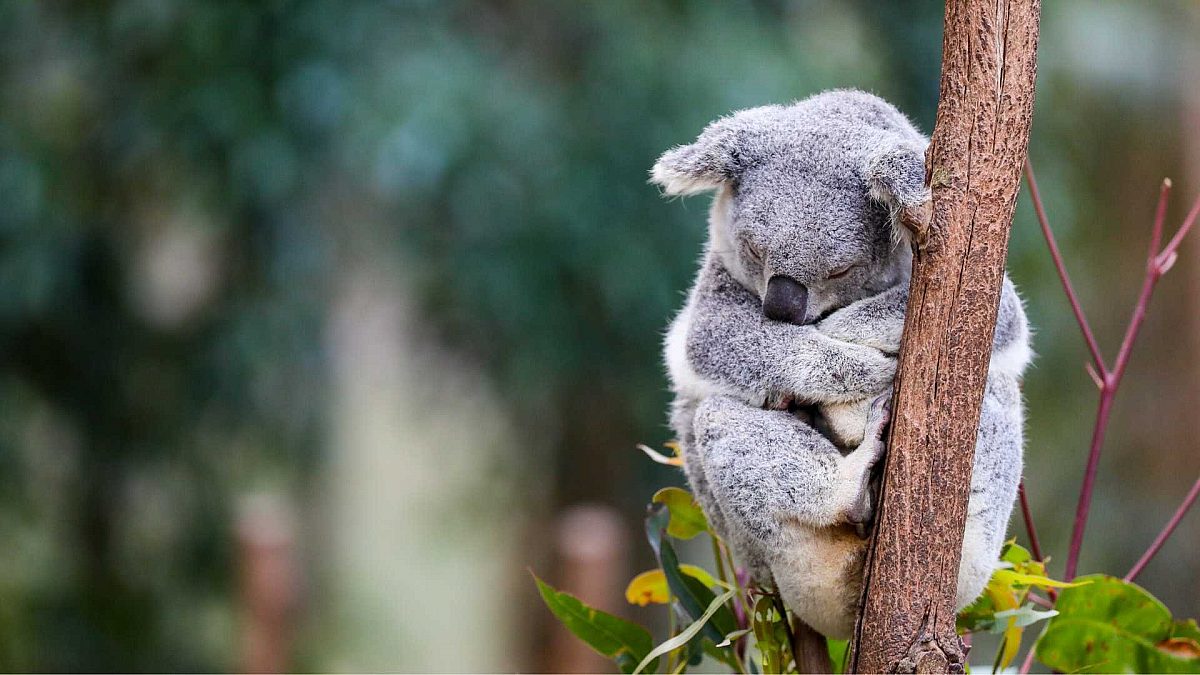
The koala a national icon
Your guide to one of our most treasured species
Meet the koala
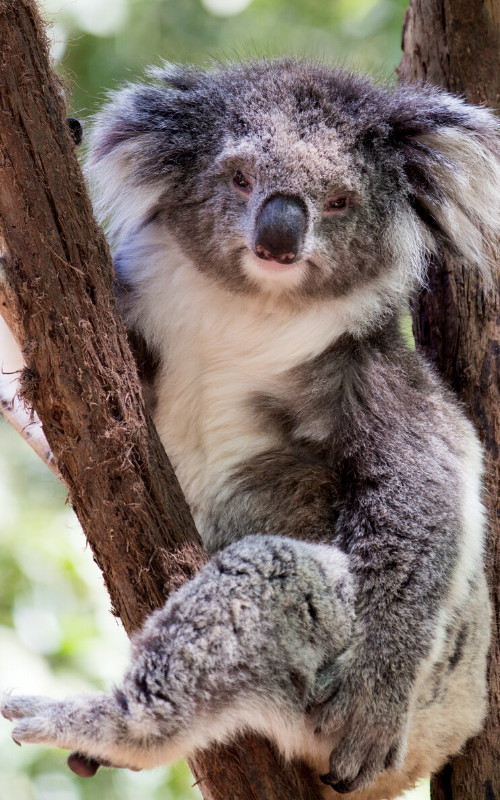
They represent the only surviving species of an entire mammal family and have been depicted in First Nations rock art for millennia, but koalas are under pressure like never before. On 11 February this year, the Australian Government officially listed the koala as Endangered in Queensland, NSW and the ACT.
For species like the koala, we know the biggest problem is the destruction of their forest homes. With deforestation comes extinction: Australia is the worst offending country for mammal extinctions. And in the wake of the 2019-20 bushfire catastrophe, we need to do everything we can to ensure this national icon's survival for generations to come.
“I've always loved koalas. They have a front-facing gaze that makes them almost human-like; they look directly at you, with emotions, with personality," says Meghan Halverson, Ambassador and co-founder of Koala Crusaders that helps the animals throughout South East Queensland and beyond. "They have something that's deeper spiritually where I really feel like it's like they look into your soul."
Perhaps it's this mystical quality that's ingrained the animal in the Australian psyche; koalas are a national treasure. But they're not bears. Let's just get that out of the way. Like the vast majority of other native Australian mammals they're marsupials, the last extant species of the family Phascolarctos. Okay, admittedly 'Phascolos' and 'arctos' means 'pouched bear' in Greek, but they're actually more closely related to wombats; you should think of them more as tree-climbing wombats.
But their claws are bear-like nonetheless: long and sharp to enable them to cling to the eucalyptus trees they inhabit along eastern stretches of New South Wales and deep into Queensland, and throughout the forests of southern Victoria.
The eucalyptus leaves they feed on aren't very nutritious, so they have to eat a lot of them to achieve not very much at all; they spend around 20 hours a day relaxing in the treetops. Indeed, the name koala is derived from the Dharug people's word gula, meaning 'no drink', since they so rarely appear on the ground it appears they have no need for water. In fact, their diet of leaves has a high water content, enabling them to stay up in the canopy.
However, (presumably after they've eaten several tonnes of eucalyptus leaves) they do eventually spring into life, and move from their home ranges during the mating season. Unfortunately this is when they are at most risk from dog attacks and car strikes, as they increasingly have to cross roads and backyards to find a mate. Koalas have inhabited Australia's forests for millions of years and yet the rate of urban expansion in parts of New South Wales and Queensland continues apace with little consideration for their wellbeing.
Strengthening protections for koalas is key to their survival - something the Wilderness Society is working hard to achieve with its New Nature Laws campaign. The koalas' plight has been made much worse by the recent bushfires; they've lost precious habitat that they simply cannot afford to lose, making efforts to save them more important than ever. “We have this animal that we know is in real trouble, a national icon, and yet the government is not protecting them," says Meghan.
Find out what more about the threats koalas face and how you can help them below.
Where to see koalas in the wild
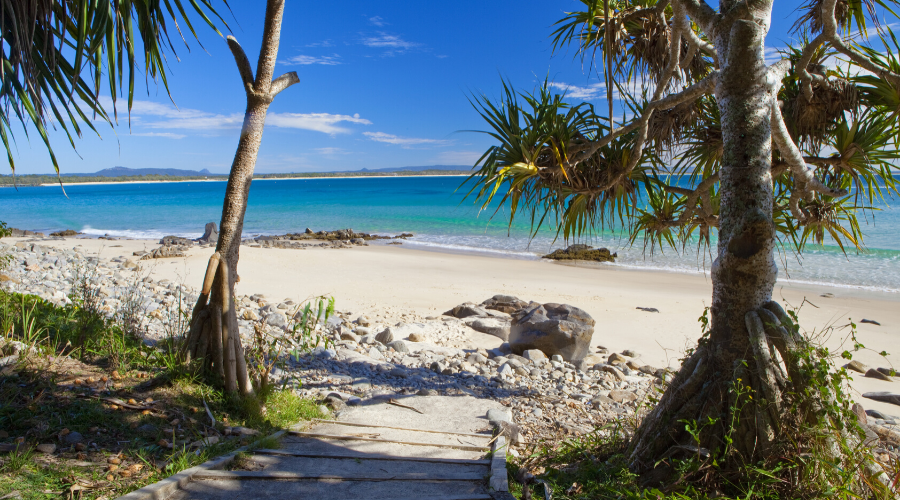
Being lazy, near motionless balls of grey fur, koalas are notoriously hard to spot, so you need to head to specific areas to stand a chance of seeing one. As with all wildlife spotting, it's a mission that takes you to some of the most beautiful corners of the country and our finest national parks.
Due to unprecedented bushfires, check national park and state emergency sites before planning travel.
Great Otway National Park, Victoria
If you're driving the Great Ocean Road make sure you take the time to explore the wild beaches, tall eucalypt forests and tree fern-lined creeks of Great Otway National Park. Walk the forested banks of Kennett River that cuts a path through its namesake town (stop for coffee at Kafe Koala) on the edge of the national park, keeping your eyes peeled for balls of grey fur in the trees. You can also catch sight of koalas in the forests around Cape Otway, which you'll pass through on the multi-day Great Ocean Walk.
Mikkira Station, South Australia
This entry is a little unusual in that it's the location of an introduced population of koalas, but no less special for it. Mikkira Homestead, not far from Port Lincoln on the Eyre Peninsula, dates back to 1843, and you can wander the old sheep station among the Manna gums looking for koalas. They can often be found sitting at eye level in the trees, providing you with a rare opportunity to meet them face to face - keeping a respectable distance of course.
Noosa National Park, Queensland
With just 15 kilometres of hiking trails, you can do this national park in a day. Walks take you along the clifftops of Noosa Headland, with white-sand beaches and secluded coves below; keep an eye out for pods of dolphins. Once you've spotted koalas sleeping up in the stands of eucalypt woodlands, cool off in Noosa National Park's Fairy Pools - crystal clear tidal pools set within the granite rock of the headland.
Murrumbidgee Valley National Park, New South Wales
There's a special place within this national park, just outside the town of Narrandera, that does what it says on the tin. The park's Koala Reserve is an ideal spot to look for the population of some 200 koalas that sit in the river red gums lining the Murrumbidgee River. On hot days they like to rest in branches that hang out over the water.
Koalas are under threat
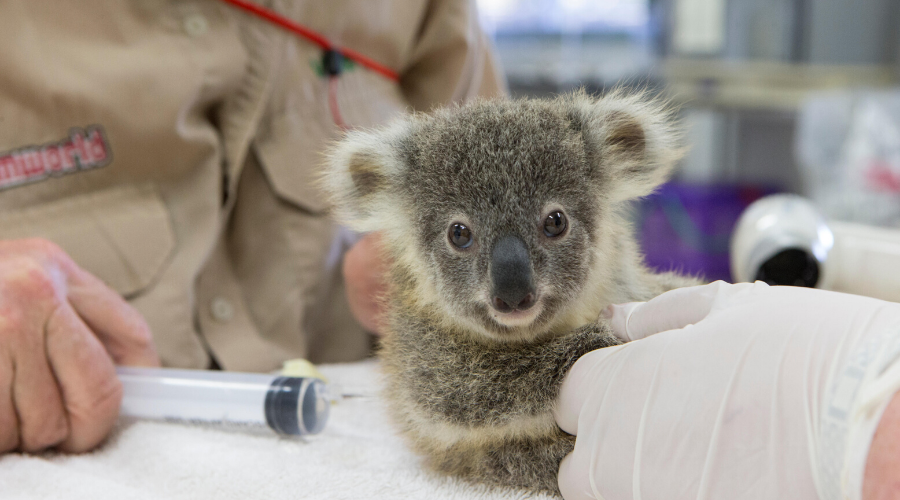
On 11 February 2022, the Australian Government officially listed the koala as Endangered in Queensland, NSW and the ACT. Over roughly the last 20 years, koalas numbers have declined by almost 50% across Queensland alone and have continued to do so. Deforestation—the reduction or complete removal of native forest and bushland—has escalated over recent years to reach globally significant levels. Eastern Australia is now a recognised global deforestation hotspot, alongside places including the Amazon, the Congo and Borneo.
A loss of habitat from land clearing was compounded by the 2019-20 bushfire crisis. “With fires reaching up into the canopy, very few animals have survived. And those that have been lost mark significant drops in population. So with the decline of a species already under threat, that has now just been exacerbated. Probably tenfold,” says Meghan Halverson, who has been assisting with koala rescues with her group Koala Crusaders.
On Kangaroo Island, over half the 50,000-strong population was lost as a result of the Black Summer fires, a particularly bad blow because the island's koalas represent an important population free from chlamydia. The bacterial infection can lead to blindness, bladder inflammation, infertility and eventually death, and is widespread in groups of koalas around the country.
On top of being susceptible to bushfires and disease, urbanisation is a major issue. Development projects in places of rapid urban growth like south-east Queensland encroach on critical habitat, with weak environmental laws enabling developers to move into areas that have been home to koalas for millennia.
Urbanisation in areas with koalas has meant the fragmentation of their habitat, and as a result they increasingly have to cross busy roads and backyards to find new food sources and mates, leading to car strikes and dog attacks.
What you can do to help
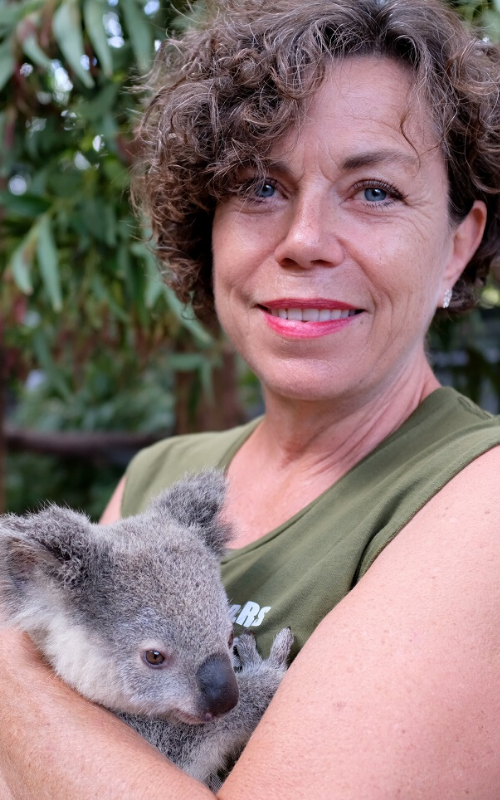
Following the catastrophic 2019-20 bushfire season, koalas need our help now more than ever. We simply can't afford to have weak environmental protections any longer. The Environment Protection and Biodiversity Conservation Act (the EPBC) is Australia’s national environment law and it has failed to look after our world-famous biodiversity.
The EPBC Act is undergoing a once-in-a-decade review. It provides us with a golden opportunity to put strong protections in place to safeguard animals like koalas.
“We've lost so much habitat, and now we have [the unprecedented] fires, so there's climate change in there as well," says Koala Crusaders' Meghan Halverson. "We need to re-evaluate pre-approved development applications, anywhere where koala habitat is being cleared; you can't keep clearing trees and the connectivity between areas of habitat, it's critical for their survival. New environmental laws are needed to address that.”
You can help secure a healthy future for koalas by supporting our New Nature Laws campaign and joining your local community group.
In a positive step for koalas, in 2021 the Queensland Government moved ahead with its South East Queensland Koala Conservation Strategy. If accompanied by stronger laws to protect all remaining koala habitat, it has the potential to deliver meaningful protections for South East Queensland’s koalas. And in 2023, after much lobbying by our grassroots community groups the incoming NSW State Labor government committed to a Great Koala National Park on the state's north coast. We are continuing to press for logging to be halted within areas of NSW that have been earmarked for this new park.